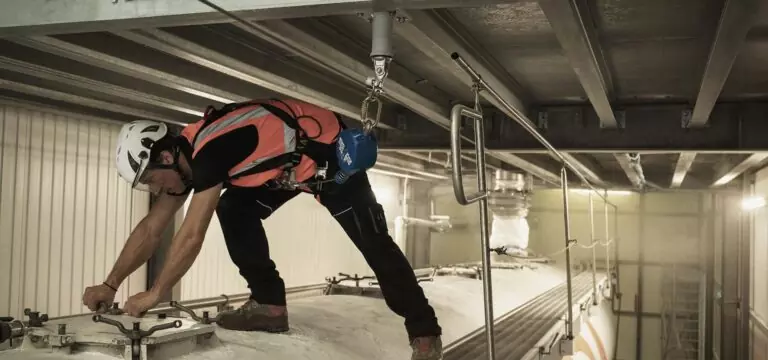Choosing the Right Fall Arrest Lifeline System for Your Needs in the Philippines
Ensuring safety in environments with elevated heights is crucial. Falls from heights can lead to severe injuries or even fatalities, making fall protection systems an essential component in workplace safety. In the Philippines, where construction, telecommunications, and various industrial activities are prevalent, choosing the right fall arrest lifeline system is vital for protecting workers and ensuring compliance with safety regulations.
Understanding Fall Arrest Lifeline Systems
What is a Fall Arrest Lifeline System? A fall arrest lifeline system is a safety setup designed to prevent falls from heights and ensure the safety of workers. These systems are integral in industries where employees work on elevated surfaces or perform tasks that involve climbing or working near edges.
Purpose of Fall Arrest Systems Fall arrest systems work by arresting a fall in progress, thereby minimizing the risk of injury. They consist of various components, including lifelines, anchors, and harnesses, which together provide a secure means to prevent falls and ensure worker safety.
Regulations in the Philippines In the Philippines, fall protection is governed by regulations set by the Department of Labor and Employment (DOLE) and other local safety standards. Compliance with these regulations is essential to ensure worker safety and avoid potential legal issues.
Types of Fall Arrest Lifeline Systems
Horizontal Lifelines Horizontal lifelines are designed to provide continuous fall protection across large areas. These systems use flexible lifelines installed between anchor points, allowing workers to move horizontally while remaining connected. They are ideal for rooftops, construction sites, and industrial facilities, where freedom of movement along a specific path is required.
Vertical Lifelines Vertical lifelines are crucial for tasks that involve climbing or descending. They consist of vertical ropes or cables, along with connectors and anchorage points. Vertical lifelines are commonly used in industries such as telecommunications, construction, wind energy, and confined space entry, where vertical movement is frequent.
Overhead Lifelines Overhead lifelines are installed above the worker, typically on structures or ceilings, providing fall protection for tasks performed below. This type of system is especially useful in manufacturing facilities, warehouses, and assembly lines, where workers need to move freely beneath the lifeline while remaining securely connected.
Rail-Type Lifelines Rail-type lifelines, manufactured in Europe and compliant with EN 795:2012 class D, are made of aluminum alloy with an anodized finish. This design ensures resistance to marine environments and prevents electrolytic corrosion between the rail and the steel framework. Rail-type lifelines are suitable for both fall arrest and abseiling purposes.
Key Considerations for Choosing a Fall Arrest Lifeline System
Safety Requirements Assess your specific safety needs based on the work environment. Consider factors such as the height at which work is performed, the nature of the tasks, and potential fall hazards.
Industry-Specific Needs Tailor the lifeline system to the requirements of your industry. For example, construction sites may need more robust horizontal lifelines, while telecommunications might require specialized vertical lifelines.
Compliance and Standards Ensure the system meets local safety regulations and international standards. Compliance with these regulations is essential for legal adherence and ensuring the highest level of safety.
Customization Options Opt for systems that offer customization to fit your specific needs. Tailored solutions ensure that the fall arrest system is effective and appropriate for your work environment.
Benefits of Quality Fall Arrest Lifeline Systems
Enhanced Safety Quality lifeline systems significantly reduce the risk of falls and injuries. By providing reliable fall protection, these systems enhance overall workplace safety.
Durability Investing in high-quality lifelines ensures long-term performance and resistance to environmental factors, reducing the need for frequent replacements.
Regulatory Compliance Meeting safety regulations and standards helps avoid legal penalties and ensures that the system is effective in protecting workers.
Cost-Effectiveness While quality systems may require a higher initial investment, they offer long-term cost savings by minimizing the risk of accidents and reducing maintenance needs.
How to Choose the Right Provider
Expertise and Experience Select a provider with extensive industry experience and expertise in fall protection. An experienced provider can offer tailored solutions and ensure that the system meets your specific needs.
Customization Capabilities Ensure that the provider can customize solutions to fit your work environment and safety requirements. Customization ensures the system’s effectiveness and relevance.
Customer Support Evaluate the level of customer support offered by the provider. Effective support is crucial for system installation, maintenance, and addressing any issues that may arise.
Takeaway
Choosing the right fall arrest lifeline system in the philippines is critical for ensuring the safety of workers at elevated heights. By understanding the types of systems available, assessing your specific needs, and selecting a reputable provider, you can effectively protect your workforce and comply with safety regulations.

